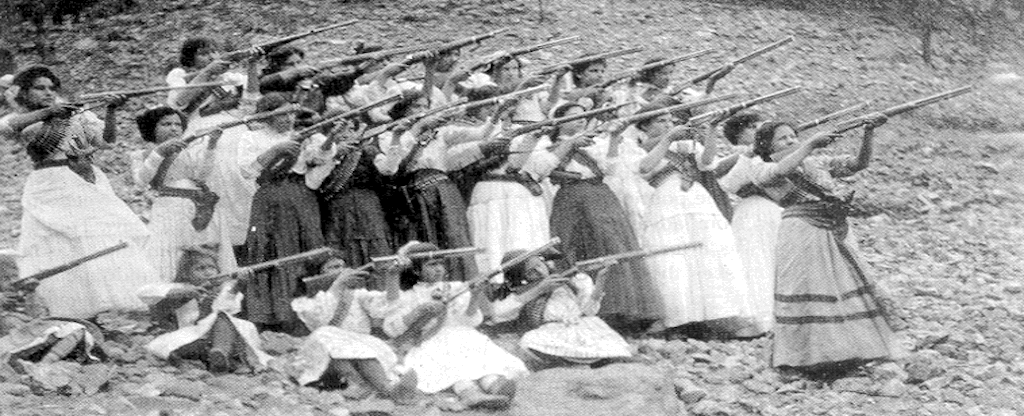
Description
In this lesson students will identify the common causes for resistance in the Mexican Revolution by learning about the famous faces behind the Mexican Revolution such as Zapata & Villa, as well as the less discussed heroes and heroines such as Petra Herrera & Vicente Guerrero. This is lesson 3 of 3 of the unit In What Ways Might Colonization Lead to Rebellion?
Date Range: 1910-1924
Grade Levels: 9-12
Country: Mexico
Course Subjects: Art & art history studies; indigenous studies; Latin American studies; women & gender studies; world history studies
Topics: Mexican history; the Mexican Revolution; Pancho Villa; Emiliano Zapata; Petra Herrera; Vicente Guerrero; Latin American social and political revolutions; indigenous organizing; the Latin American left
Teaching Time Frame: 1 day (90 minute lesson)
Supporting Question
How did people of different backgrounds organize?
Learning Objectives
- Identify the common causes for resistance in the revolution by learning about the famous faces behind the Mexican Revolution (Zapata & Villa), as well as the less discussed heroes and heroines (Petra Herrera & Vicente Guerrero), and
- Dissect how these revolutionaries contributed to the Revolution.
- Synthesize their learning on the impact of one revolutionary leader through writing a creative story.
Relevant Teaching Standards
TEKS Guidelines
- World History Studies
- (c)-(24)-(A) – Describe the changing roles of women, children, and families during major eras of world history
- (c)-(26)-(A) – Identify significant examples of art and architecture that demonstrate an artistic ideal or visual principle from selected cultures
- (c)-(26)-(B) – Analyze examples of how art, architecture, literature, music, and drama reflect the history of the cultures in which they are produced
- (c)-(22)-(E) – Identify examples of individuals who led resistance to political oppression such as Nelson Mandela, Mohandas Gandhi, Oscar Romero, Natan Sharansky, Las Madres de la Plaza de Mayo, and Chinese student protestors in Tiananmen Square
C3 Framework
- History
- D2.His.3.9-12. Use questions generated about individuals and groups to assess how the significance of their actions changes over time and is shaped by the historical context.
- D2.His.16.9-12. Integrate evidence from multiple relevant historical sources and interpretations into a reasoned argument about the past.
- D2.His.14.9-12. Analyze multiple and complex causes and effects of events in the past.
- Evaluating Sources and Gathering Evidence
- D3.1.9-12. Gather relevant information from multiple sources representing a wide range of views while using the origin, authority, structure, context, and corroborative value of the sources to guide the selection.
Downloads
Lesson Plan
Worksheet
Featured Sources
In What Ways Might Colonization Lead to Rebellion? (Unit)
Rights Statement
Creator(s): Emma Ensign-Church, Graduate Student, Department of Curriculum & Instruction; & Emiliano Guajardo, Graduate Student, Department of Curriculum & Instruction
Date: 2019-05-22
This assignment is under a Creative Commons Attribution-NonCommercial-ShareAlike 4.0 International Public License (“Public License”). This license lets others share, remix, tweak, and build upon the work non-commercially, as long as they credit the creators and license their new creations under the identical terms.
